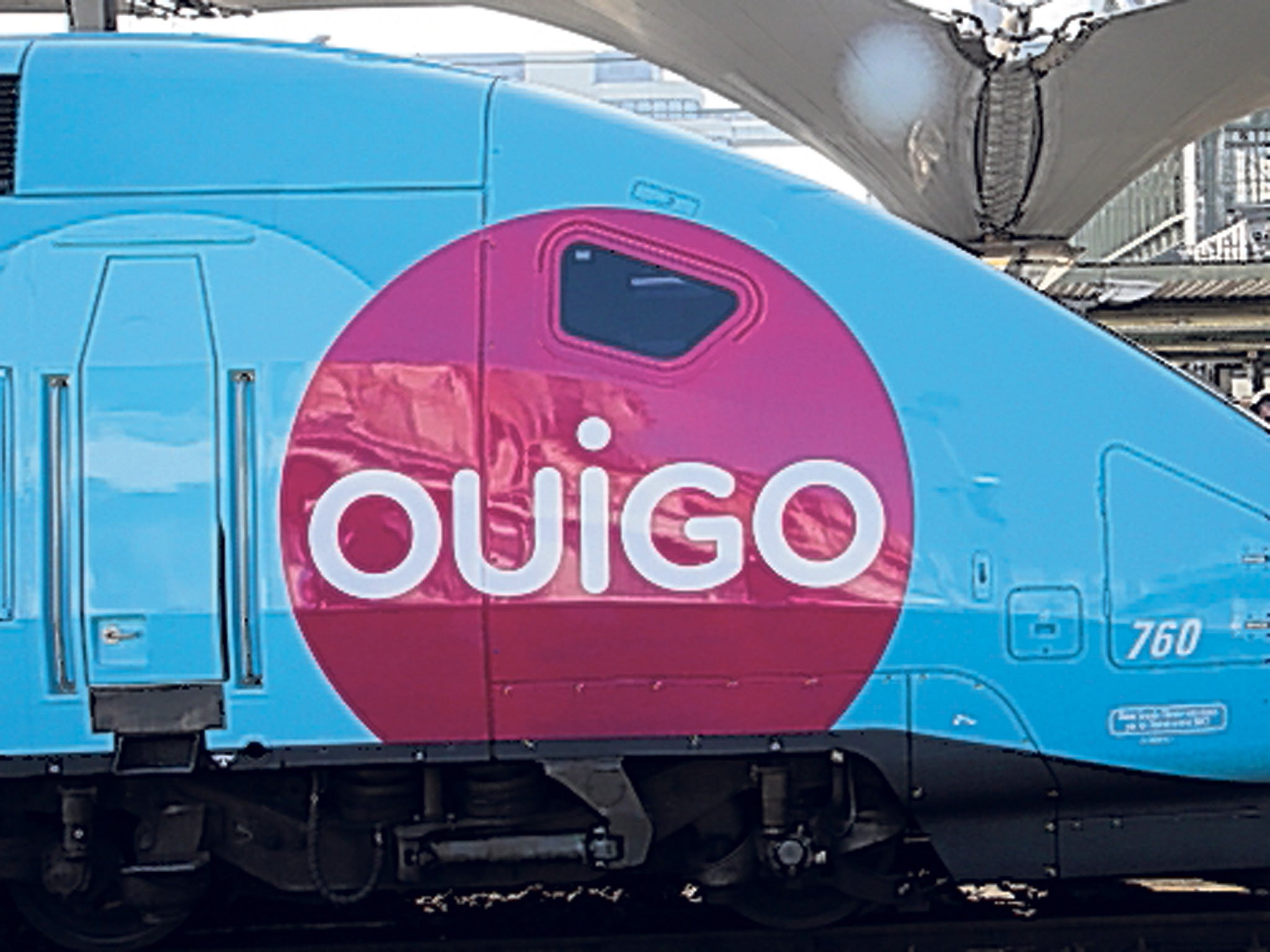Ouigo: welcome to troisième classe
The man who pays his way

Seven months ago, you may recall, I revealed the French rail authorities' plan to take on the budget airlines. While five out of six citizens have travelled on a Train à Grande Vitesse (TGV) at some time in their lives, only one in four takes a high-speed train during the course of a typical year. The first no-frills train is scheduled to depart on Easter Monday. The parent company, SNCF, could accurately have called it troisième classe, but instead settled on the awkward Franglais name "Ouigo".
The mastermind is the SNCF president, Guillaume Pepy. In a bid to make rail travel "hyper-accessible", he is cutting fares "between the Paris region and south-eastern France" to as little as €10 for a journey of up to 500 miles. So how does he do that, then? By pinching ideas from the low-cost airlines and adding new twists to extract a few extra euros from his passengers.
First, strip out first class and install 100 extra seats into a TGV, raising capacity by one-fifth. Insist that everyone books online and prints out their own ticket. Cut down on luggage space, and restrict baggage to less than easyJet's cabin allowance; extra cases cost €5 booked in advance, or €40 at the station. Charge €2 to plug a laptop or phone into the on-board mains. And set a check-in deadline half an hour before departure; if the no-frills airline example is followed, missing the cut-off is likely to prove expensive.
Next, sweat your assets: the de-frilled rolling stock will run at the usual high speed, 186mph, and cover close to 2,000 miles a day – around twice as far as existing TGVs. The two on-board guards, responsible for checking tickets, will be expected to take their meal breaks on the move, rather than spending time off at a station. Très Ryanair. As the crews chew, their trains will hurry to stations that have plenty of spare capacity. "The Paris region" means Marne-la-Vallée, the station serving Disneyland, 25 miles east of the Eiffel Tower. A connecting train from the Magic Kingdom to the capital costs €7.30. Add the shocking €13.50 tram fare from Ouigo's version of "Lyon" (actually Lyon airport) into the city, and anyone who grabs a €10 fare between France's two biggest cities could spend more than twice as much travelling to and from the centres.
La guerre commence
Ouigo passengers travelling at 186mph may notice their train being overtaken by a Boeing 737 doing 500mph. The new train to Marseille competes with Ryanair's French domestic network. The Irish airline flies to Marseille from an airport it calls "Paris-Vatry (Disneyland)" – nearly 100 miles east of the French capital. Fares as low as €10 are easily available in April.
"Ryanair welcomes all competition and passengers can now decide between slow high-cost rail and fast low-cost air travel," says a spokesman for the airline. The plane gets there in 75 minutes, beating the train by two hours. You then have to reach your final destination, of course. Oddly, the nearest big station to Marseille airport is Aix-en-Provence TGV, which is another Ouigo gare (and, perhaps predictably, nowhere near the historic Provençal city).
The rail guru Mark Smith, founder of the Seat61.com website, says: "This is a train for flyers, not those who enjoy the relaxed nature of 'regular' rail travel. I wish they'd stop doing this nonsense which distracts from the task of running one coherent, integrated system."
The schedules could scarcely be less convenient for British travellers hoping to transfer to the new low-cost services. While thrill-seekers can travel direct from London to Disneyland, no-frill seekers will face at least a four-hour wait for a cut-price French connection to the south.
Reading matter
For rail passengers on this side of the Channel, Easter will bring a harvest of "train routes you never thought you'd see again", such as Oxford to Torquay and Basingstoke to Penzance. Because of the rebuilding of the Great Western rail hub at Reading, trains in and out of London are taking some exotic routes. Waterloo is temporarily restored as gateway to Cornwall (as it was in the Sixties, with the Atlantic Coast Express). Main-line travellers from Paddington to Bristol, Cardiff and all stations to Swansea will be treated to a detour through the Chilterns to Banbury, where the train must reverse to run down to Oxford and eventually rejoin the main line at Didcot.
"A great deal of planning goes into minimising disruption for our passengers," says the Association of Train Operating Companies.
But no doubt some passengers who find themselves aboard trains dawdling in north Oxfordshire when they should already be in London or Bath will arrive in Banbury cross.
Join our commenting forum
Join thought-provoking conversations, follow other Independent readers and see their replies
Comments